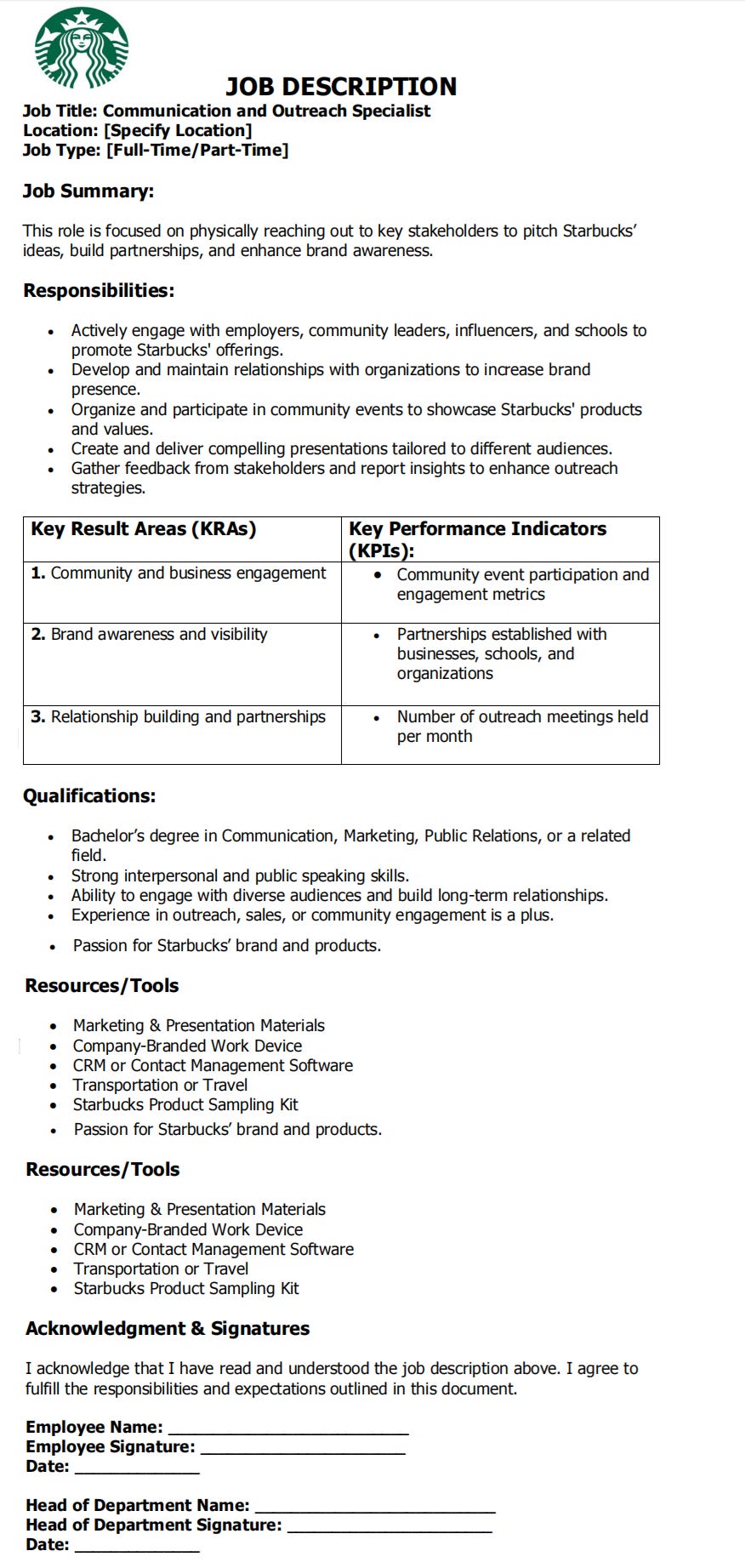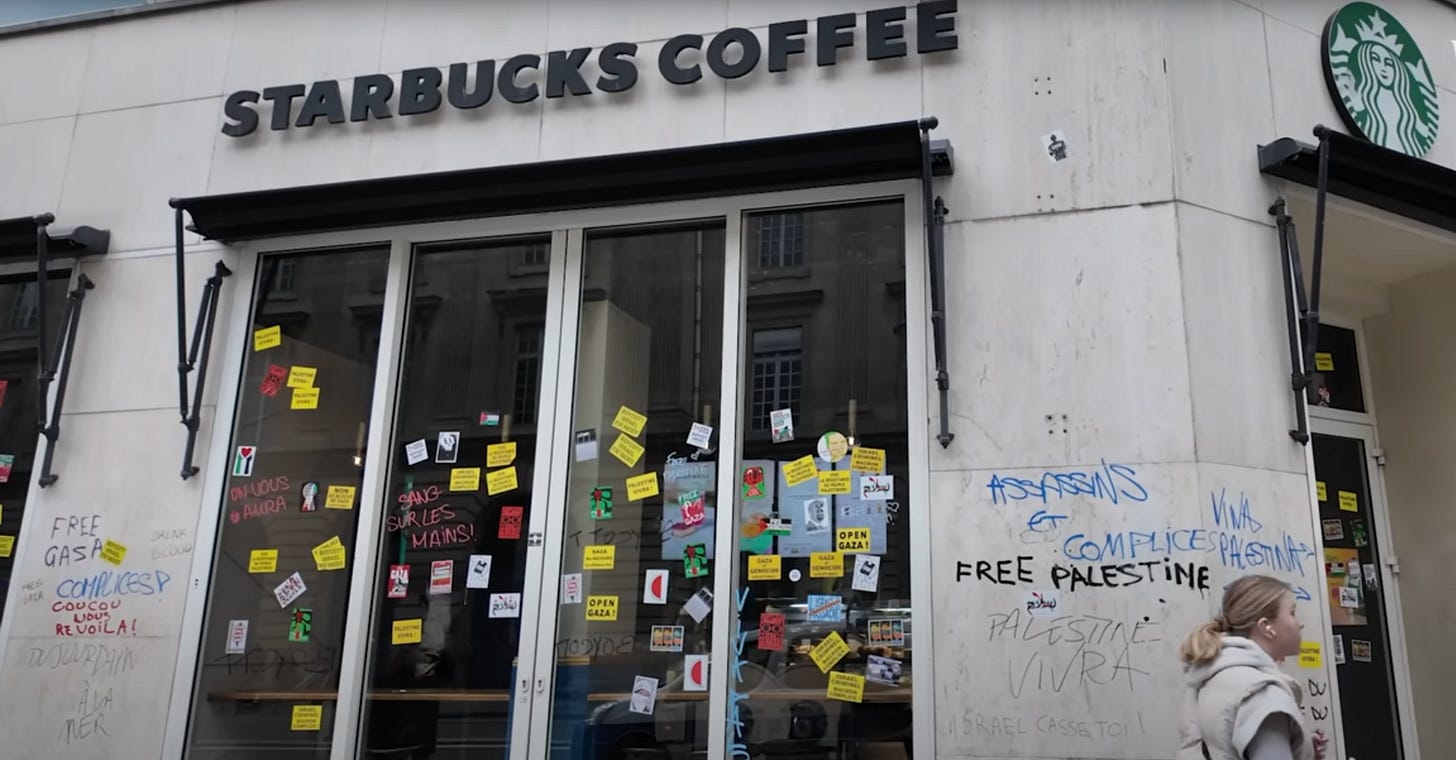The Starbucks strategy I'd recommend for CEO Brian Niccol to implement today
When I started my career as a Human Resources Officer and worked my way up to HR Manager, one of my biggest dreams, one that I still hold today, was to work at Starbucks.
It has always been on my list of target companies, and I have closely followed both its successes and challenges over the years.
Recently, Starbucks has faced significant hurdles, including employee layoffs and declining sales.
I can only imagine the immense pressure that CEO Brian Niccol is under, from the board, employees, and customers alike.
Despite these challenges, I want to commend Brian for his resilience. Many CEOs in his position might have stepped down, but his leadership during these turbulent times is remarkable.
If he continues to push forward with the same determination, I believe Starbucks can overcome these difficulties and emerge stronger.
Right now, I know Starbucks employees are feeling unsettled, especially with the recent news that the company is planning to lay off 1,100 corporate employees globally.
According to Brian Niccol, this decision is aimed at improving operational efficiency, increasing accountability, reducing complexity, and enhancing integration.
Additionally, to address sluggish sales, he is streamlining Starbucks’ menu and experimenting with ordering algorithms to better manage mobile, drive-thru, and in-store orders.
With so much on his plate, I can only imagine how little sleep Brian is getting these days.
However, despite these challenges, I believe there are key strategies Starbucks can implement to turn things around.
Some of these ideas might seem unconventional, but if executed with a winning mindset, they could lead to success.
Below are the key strategies Starbucks should implement today under Brian Niccol's leadership
1. Engage employees through a “Town Hall”
One immediate action Brian Niccol should take is organizing a company-wide town hall to gather insights from employees.
Employees are a powerful resource, they are on the ground, witnessing firsthand what’s working and what isn’t.
I am certain they have valuable ideas on how Starbucks can improve its operations and performance.
By hosting an effective town hall, Brian can encourage employees to share their thoughts and suggestions.
The leadership team should actively listen, collect feedback, and identify common themes for potential implementation.
This single step could lead to significant positive change within the company.
2. Leverage local media for customer engagement and brand loyalty
Brian should leverage local radio stations and podcasts to engage with customers and gather insights on how to improve their services.
These platforms provide an excellent opportunity for consumers to voice their opinions, helping the company understand their needs and expectations.
In fact, this is a powerful strategy that can enhance brand recognition and drive sales growth.
When customers see their ideas being implemented, they will be more likely to continue using the service, fostering long-term loyalty.
For Starbucks, identifying popular local podcasts and radio stations in each of their locations is crucial for direct consumer interaction.
Once customer feedback is collected, the company should analyze the data to identify recurring themes.
Different locations may have unique needs, so implementing tailored strategies based on regional preferences will be essential.
After finalizing the strategies, Starbucks should communicate with both employees and customers to inform them that their suggestions have been implemented. This acknowledgment will make both audiences feel valued, strengthening brand loyalty and boosting sales.
3. Align business strategy with organizational goals
As Starbucks implements these initiatives, it is also essential to revisit the company’s core objectives, especially following recent layoffs.
CEO Brian Niccol previously stated that the company's goal was to operate more efficiently, increase accountability, reduce complexity, and enhance integration.
To achieve these objectives, Starbucks should adopt an Objectives and Key Results (OKR) framework that ensures measurable progress.
OKR Framework for Starbucks
Objective
Streamline operations, enhance team accountability, simplify processes, and integrate key systems to improve efficiency in coffee production and retail.
Key Results
Reduce order processing time by X% for both in-store and online orders within two quarters.
Improve accountability by ensuring X% of shift tasks (e.g., brewing schedules, stock checks, equipment maintenance) have a designated owner with tracking in place.
Simplify processes by eliminating at least three redundant steps in supply chain management, from sourcing to distribution.
Achieve X% integration of inventory, sales, and customer data systems for real-time tracking.
Strategic Initiatives (Aligned with BALOE Framework)
Break Down
Analyze daily operations, including order processing, brewing, and supply chain workflows, to identify bottlenecks.
Assess supplier relationships and inventory management to uncover inefficiencies.
Assign
Implement a digital task management system (e.g., Trello, Asana) to assign clear responsibilities to baristas, managers, and logistics teams.
Establish a RACI (Responsible, Accountable, Consulted, Informed) model for sourcing, roasting, brewing, and customer service processes.
Limit
Reduce the number of suppliers to simplify logistics and maintain consistency in bean quality.
Standardize recipes and brewing procedures across locations to ensure quality control.
Optimize
Automate inventory tracking using POS-integrated stock monitoring systems (e.g., Square, Toast, Lightspeed).
Leverage data analytics to forecast demand and adjust production schedules efficiently.
Execute
Train baristas and store managers on new accountability structures and system integrations.
Conduct bi-weekly performance reviews to track efficiency improvements and address gaps.
Once these steps are in place, Brian should hold a staff meeting to communicate the new strategy and ensure smooth implementation. While the plan may seem straightforward, executing it effectively will yield significant results.
4. Leverage local influencers
Another effective strategy is collaborating with local influencers.
With over 40,000 stores worldwide, Brian and his team can strategically partner with influencers to market Starbucks products.
They can further strengthen community engagement by working with local leaders and organizations.
Despite Starbucks' premium pricing, this approach can help drive sales and build strong brand ambassadors.
Given the current slowdown in sales, this strategy alone has the potential to generate a substantial boost.
5. Corporate benefits program
Starbucks can create a customizable benefits package for employers, allowing companies to offer Starbucks perks as part of their employee benefits.
Many employers prioritize retaining talent with attractive benefits, and adding Starbucks to their perks package could enhance employee satisfaction and retention.
To accelerate adoption, Starbucks can engage with employer associations in local markets and present this initiative, allowing these associations to promote the idea to their member organizations.
6. Hire communication & outreach specialists
Starbucks should hire Communication and Outreach Specialists to engage directly with target audiences and promote Starbucks' initiatives.
These specialists will be responsible for pitching Starbucks' ideas to employers, local communities, leaders, influencers, and organizations, including schools, ensuring that even teachers can enjoy their coffee.
Brian should collaborate with the HR team to identify the right candidates who can effectively communicate and carry out these outreach efforts.
Below is a sample job description for this role.
For more details on crafting a compelling job description, check out this article I wrote: Managers, here’s how to craft job descriptions that set your team up for success.
7. Implement a customer complaint tracking system
Customer complaints are a significant issue at Starbucks.
To address this, I recommend launching a customer complaint tracking system to monitor and resolve recurring issues efficiently.
This system will enhance customer satisfaction by ensuring that frequent concerns are quickly identified and addressed.
Brian should work closely with the IT department to ensure the system is reliable, accessible worldwide, and experiences minimal downtime.
8. Empower store managers for faster resolutions
To further improve customer experience, Starbucks should empower store managers with decision-making authority to resolve complaints on-site quickly.
This will:
Reduce the need for excessive follow-up meetings.
Minimize unexpected issues and inefficiencies.
Allow store managers to take ownership of their decisions and drive accountability.
9. Address price increases & consumer concerns
With recent menu price increases and consumer backlash over alleged political stances on the Gaza conflict, Starbucks can implement strategic pricing incentives such as:
Limited-time discounts to attract price-sensitive customers.
Loyalty rewards to encourage repeat purchases.
Value bundles to enhance perceived affordability.
These strategies will help Starbucks regain customer trust, drive sales, and maintain brand loyalty despite economic challenges.
Final thoughts
This plan is designed to help Starbucks transition from its current struggles to a more positive, customer-centric future.
Some strategies may seem traditional or unconventional, but if implemented with a results-driven mindset, they can make a real impact.
That’s all from my end, if you have any thoughts or suggestions, feel free to share them below!
Have a Starbucks moment.









